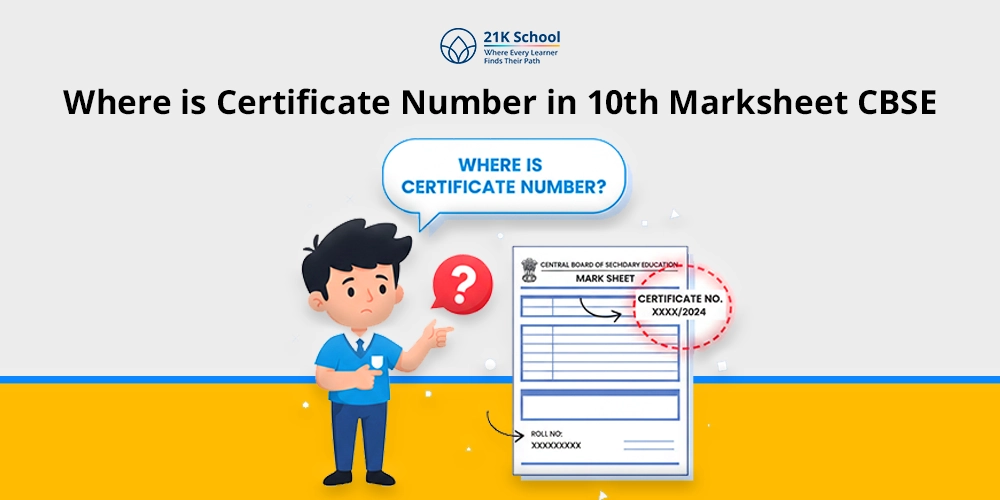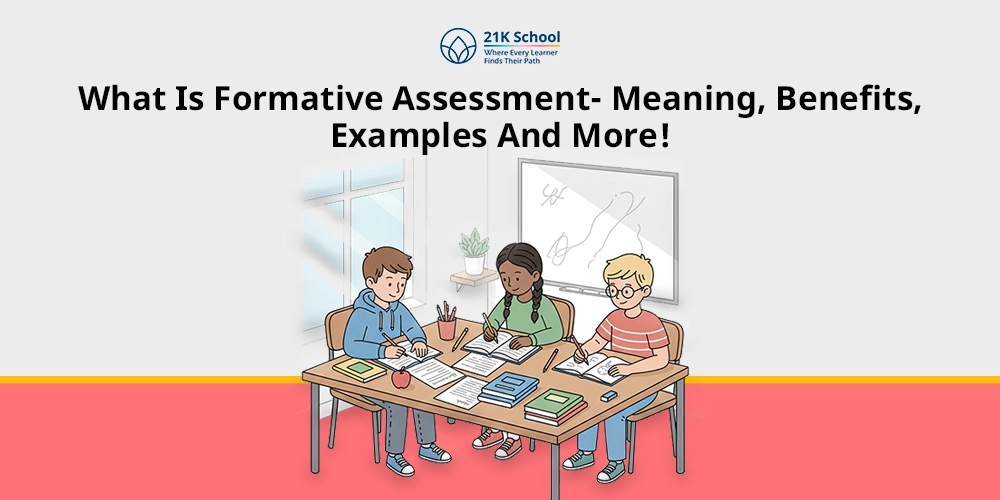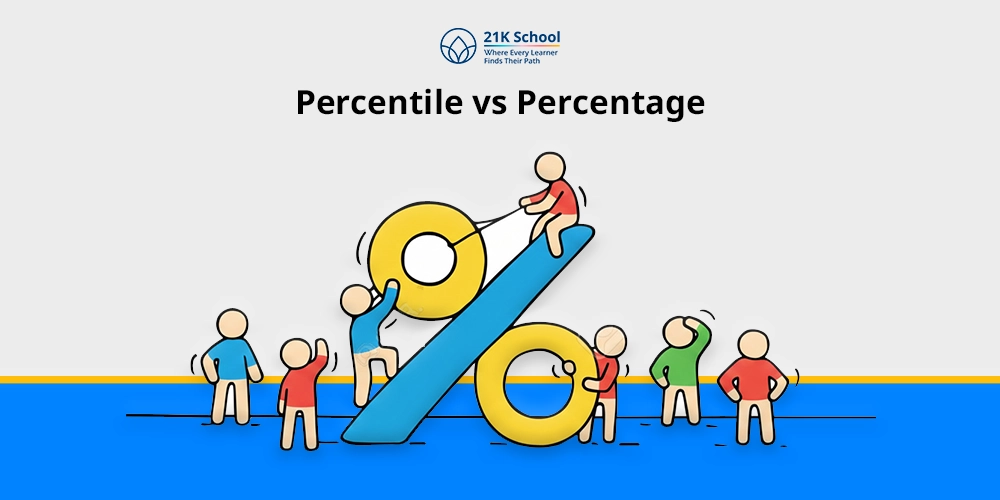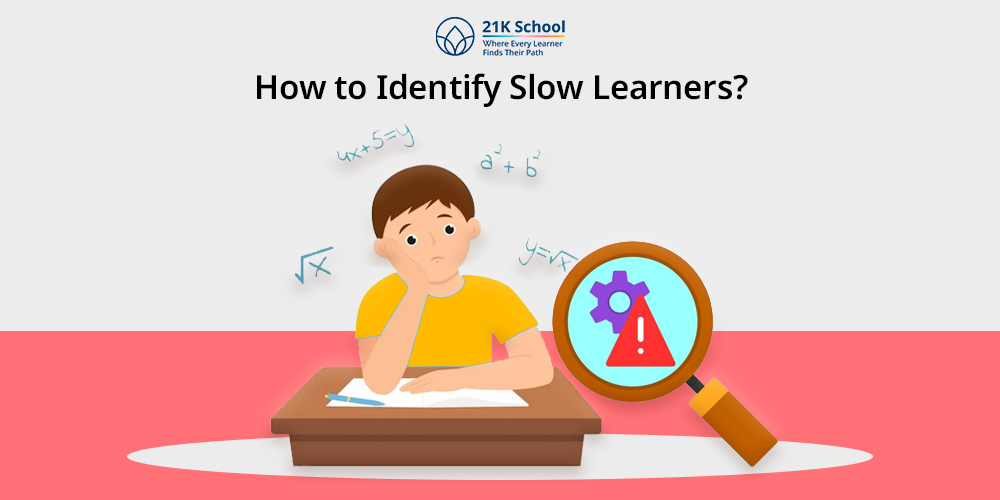
Do you know what the best way is to identify slow learners?
Slow learners can be identified as their inabilities and some physical, emotional and behavioural traits. Slow learners are children whose ability to think, process or comprehend any information is less than compared of other children.
Slow learners often find it difficult to make the same learning pace as their peers, which causes them to develop poor confidence. Slow learners basically find it difficult to grasp new concepts rapidly due to a slower learning pace and poor critical thinking skills .
Many individuals think that students with a slow learning pace are incapable of doing any tasks, but this is not true; slow learners are good at other tasks, they just have slow learning speed and accuracy.
By supporting and guiding students, parents and teachers can employ efficient techniques to improve their learning capacity.
Contents
Who are Slow Learners?
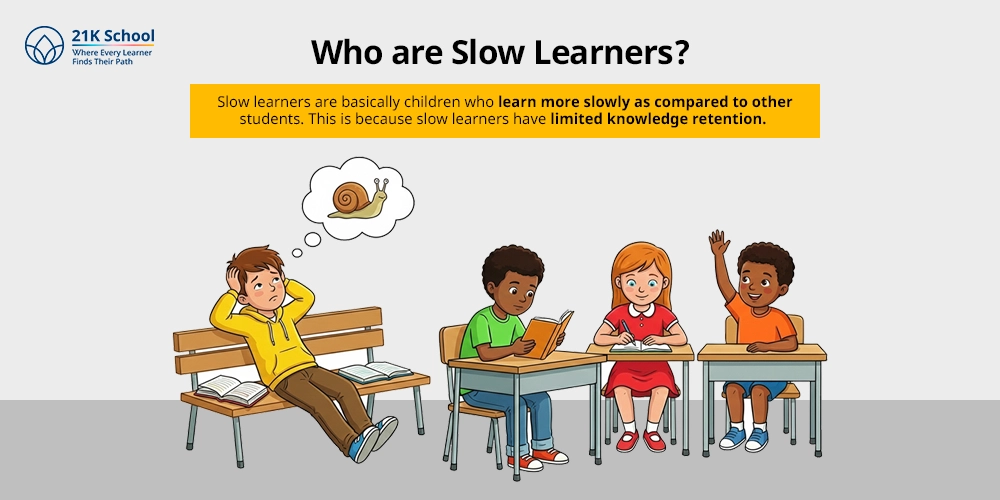
Slow learners are basically children who learn more slowly as compared to other students. This is because slow learners have limited knowledge retention. Slow learners take more time to comprehend information as compared to normal students.
Slow learners can be identified through some behavioural traits and identities such as delayed progress, unable to understand information quickly, as well as facing challenges in reading and writing.
Through these traits, one can understand whether the children are slow learners or not. However, understanding these traits easier helps in creating a possible situation for supporting such students.
Students’ learning outcomes can be improved by offering personalised learning experiences to slow learners, along with the right kind of support and guidance.
Students can effectively study within the parameters of formal education and realise their full potential when there is positivity and an inclusive learning environment.
How to Identify Slow Learners: Top 10 Practical Ways
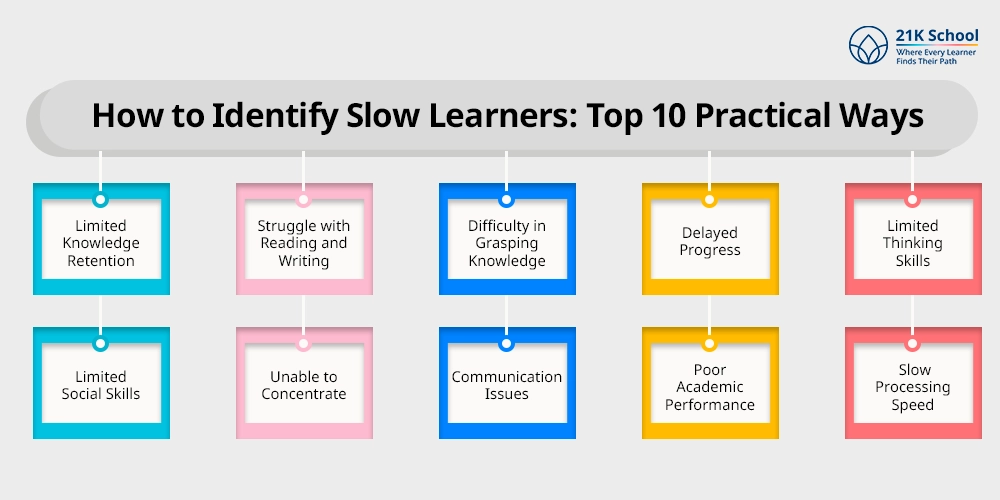
Slow learners are characterised by their incapacity to retain information or keep up with others. Slow learners encounter difficulties with communication, retention, focus, speed and other areas.
Teachers can identify slow learners based on their characteristics, which can be interpreted as their incapacity to excel in any task. By doing this, they can support early intervention using efficient strategies. Here’s how to spot slow learners.
1. Limited Knowledge Retention
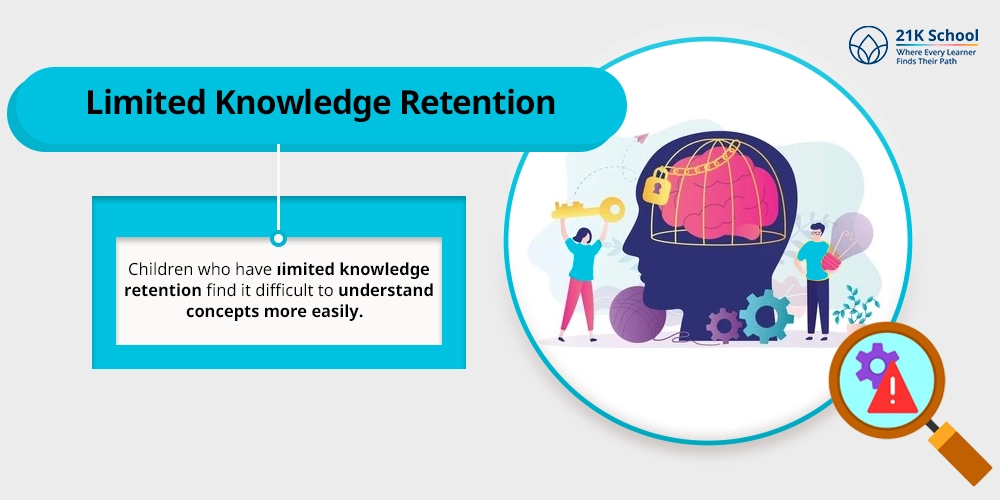
Slow learners are known for their limited knowledge retention, through which it becomes easy to understand their traits.
Children who have limited knowledge retention find it difficult to understand concepts more easily.
Students’ limited ability to retain information leads to their rapid forgetting or inability to recall it. They struggle to write exams because they can’t remember things quickly.
2. Struggle with Reading and Writing
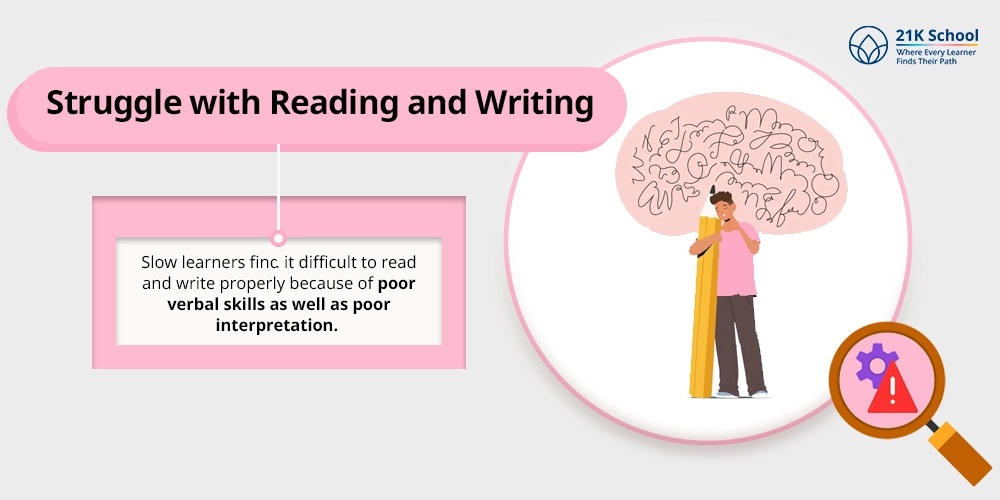
Slow learners can also be understood by their difficulty in reading and writing. Slow learners find it difficult to read and write properly because of poor verbal skills as well as poor interpretation.
Due to this problem, children find it difficult to decode any message quickly. The problem of reading and writing can be seen mostly in the literature classes, where children find it difficult to read and write such as English or any other language.
To avoid this problem, developing reading habits among childrens is a must, along with writing skills.
3. Difficulty in Grasping Knowledge
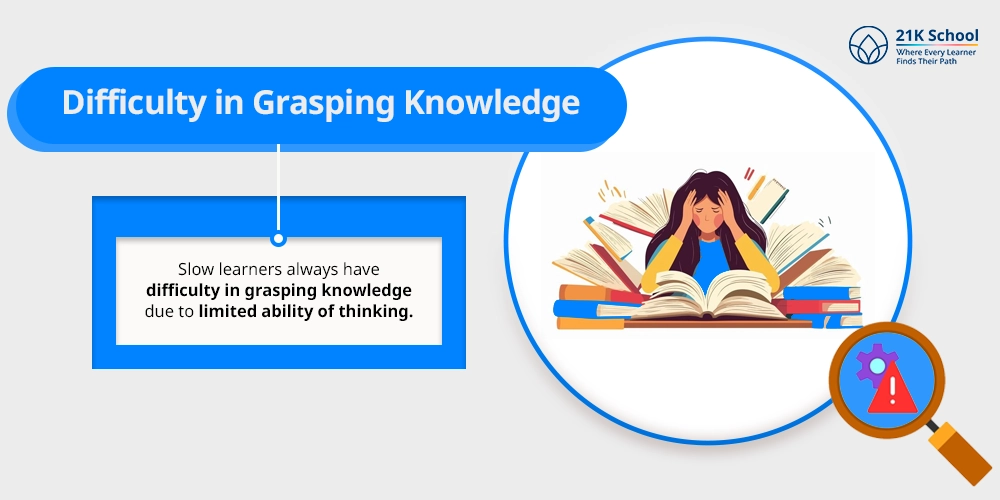
Slow learners always have difficulty in grasping knowledge due to limited ability of thinking. This trait can be understood by educators to identify slow learners.
Children with slow learning speed have difficulty in acquiring information at the same rate as their peers, due to which makes it difficult to maintain the same study speed.
Due to difficulty in grasping knowledge, students are unable to develop creative thinking skills , which also hampers their problem-solving skills .
4. Delayed Progress

Slow learners have delayed progress, due to which they respond slowly as compared to others. Students with delayed progress need more time and repetition in order to understand any concept.
Delayed progress in kids causes them to learn a topic more slowly or have difficulties in understanding the concepts; instead, they require more time to have a proper understanding of the same subject.
They learn more slowly and perform worse on tests as a result of this difficulty.
5. Limited Thinking Skills
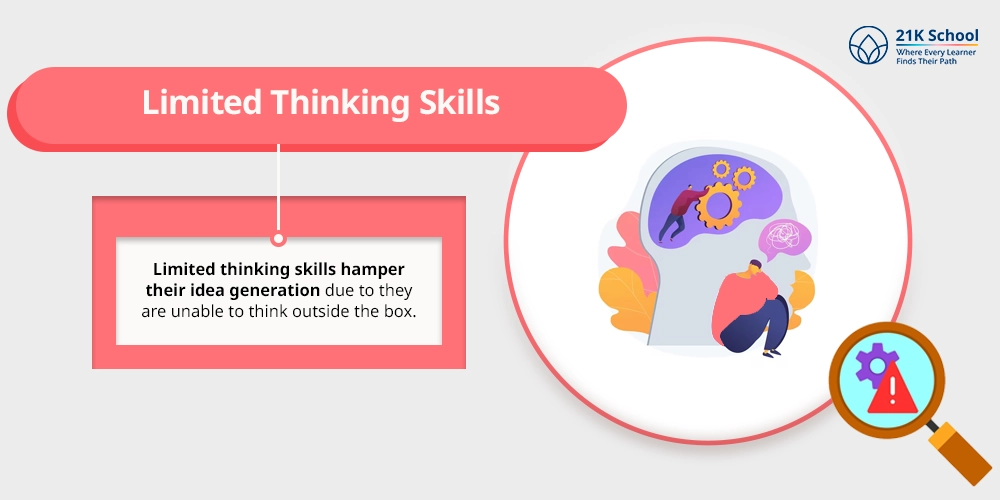
Slow learners are also known for having limited thinking skills. Limited thinking skills hamper their idea generation due to they are unable to think outside the box.
Limited thinking skills hamper their thought process to think from different perspectives.
Thinking skills are mostly essential for numeracy and calculations, and due to slow learning pace, they are unable to think from different perspectives.
6. Limited Social Skills
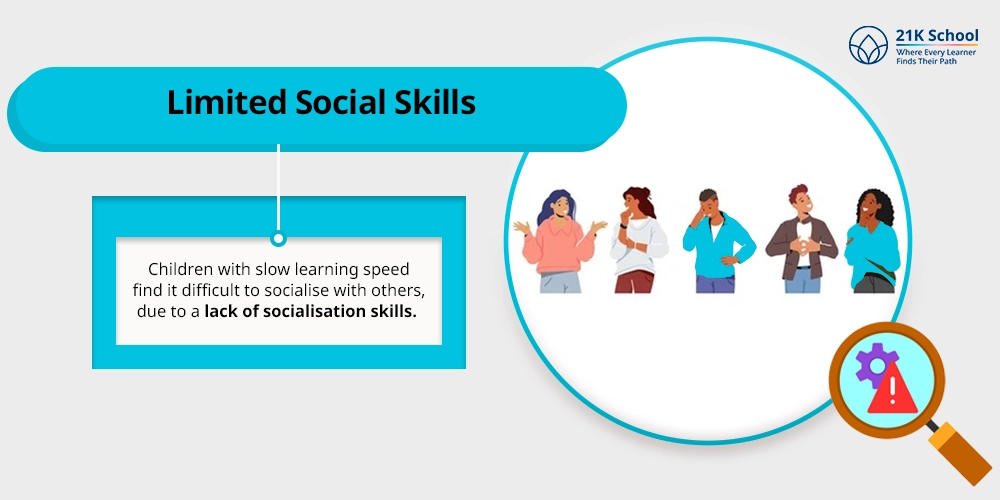
Children with slow learning speed find it difficult to socialise with others, due to a lack of socialisation skills . The lack of socialisation among children can be identified for slow learners.
Kids with a slow learning pace find it challenging to interact with others, make friends, share their thoughts and opinions, etc., which mainly occurs due to insufficient confidence and concentration.
Sometimes, a lack of socialization skills causes fear and stress among children .
7. Unable to Concentrate
Slow learners have a foggy brain, due to which they struggle to concentrate for a longer period of time. Slow learners always take short breaks or can easily be distracted by any disturbance.
Explore how to concentrate on studies .
Lack of concentration among slow learners causes them to perform poorly in their academics, as well as hampers the cognitive development of childrens and emotional intelligence .
8. Communication Issues

Lack of communication skills are a vital aspect to identify the slow learners.
Children with slow learning speed always find it difficult to communicate with others. The main causes of slow learners are poor verbal skills, lack of interpretation, poor confidence and so on.
Due to limited communication skills and inability to effectively express thoughts and emotions, slow learners become socially isolated as well as perform poorly in their academics.
9. Poor Academic Performance

Slow learners can be identified by their poor academic performance. Pupils with a slow rate of learning cannot improve their test scores.
Compared to their peers, slow learners acquire knowledge at a slower pace. Low academic achievement undermines students’ self-esteem and enthusiasm for learning.
10. Slow Processing Speed

Slow learners process information more slowly than typical students. These students struggle to understand and process resources and information.
Students with slow processing speeds have trouble understanding information quickly and expressing their opinions to others. This makes it difficult for teachers to comprehend their information and points of view.
How to Assist Slow Learners?
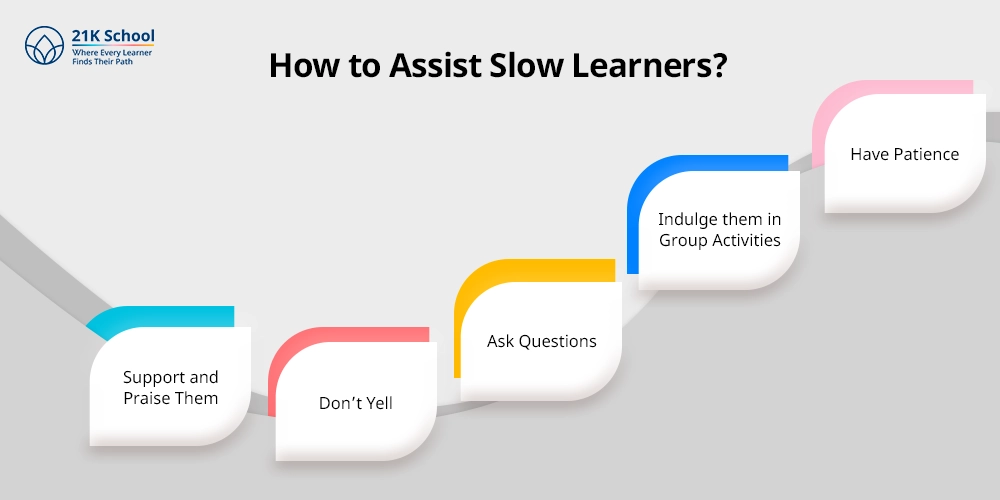
Assisting slow learners is vital for enhancing their learning outcomes. Slow learners can be identified through their characteristics or behaviours, through which teachers can help such children to achieve their learning goals.
Teachers can provide students with proper support and guidance to create an inclusive and positive learning environment .
By encouraging students to actively engage in discussions and explore various perspectives, teachers can help them enhance their learning goals.
Through encouragement, children can also participate in the teaching and learning process. The following are the ways through which slow learners can be assisted.
1. Have Patience
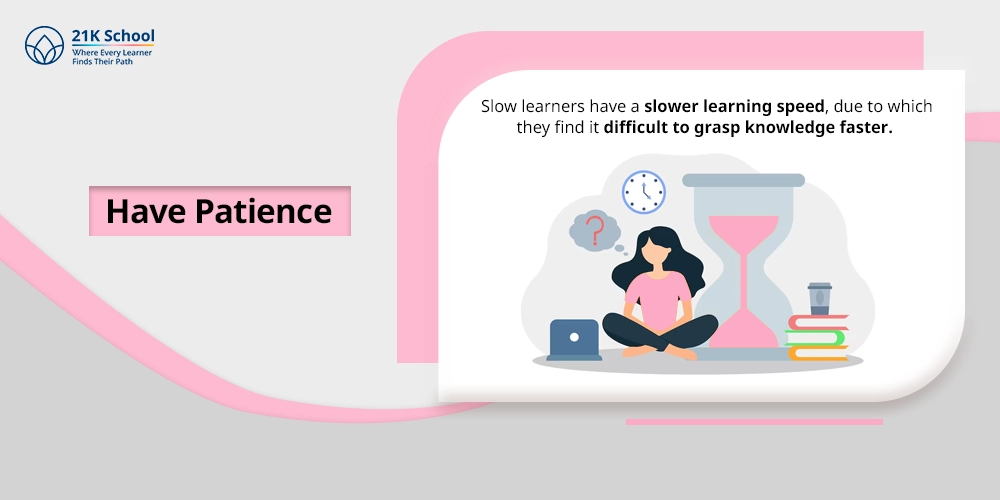
Always make sure that, while teaching slow learners, it is essential to have patience. Slow learners have a slower learning speed, due to which they find it difficult to grasp knowledge faster.
Teachers dealing with such kids have to be patient, as slow learners take longer time than usual.
Providing such children with the benefits of personalised learning opportunities will help them to understand concepts more clearly and at their own learning speed.
2. Indulge them in Group Activities
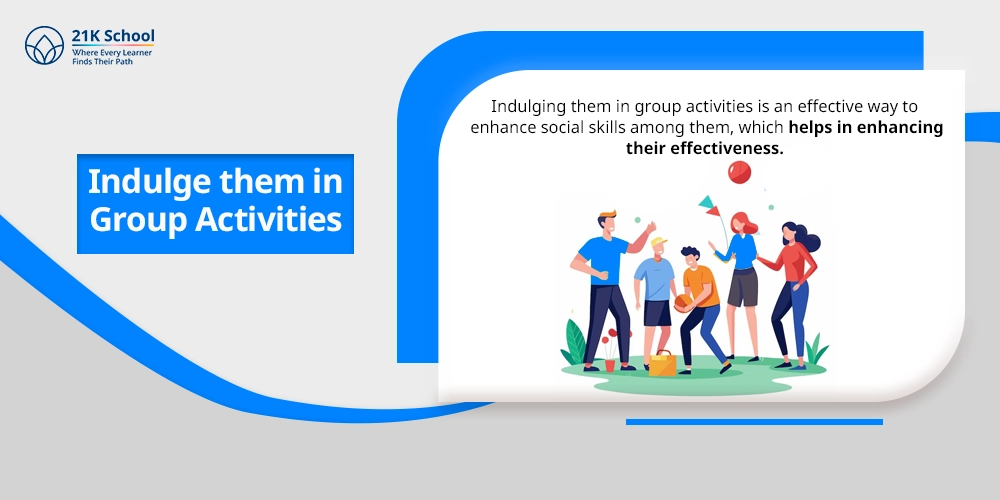
Another effective way to assist such students with encourage them to participate in group activities.
Indulging them in group activities is an effective way to enhance social skills among them, which helps in enhancing their effectiveness.
By indulging students in games, sports, class activities, etc., it allows them to develop collaboration skills and fosters empathy among them.
3. Ask Questions

Teachers can assist slow learners by asking them questions. Asking questions about the lessons helps teachers to understand their responses or limitations.
This learning method allows children to gain confidence as well as enhance their knowledge retention.
Through understanding the weak points of children’s teachers can assist them to expand their learning outcomes.
4. Don’t Yell
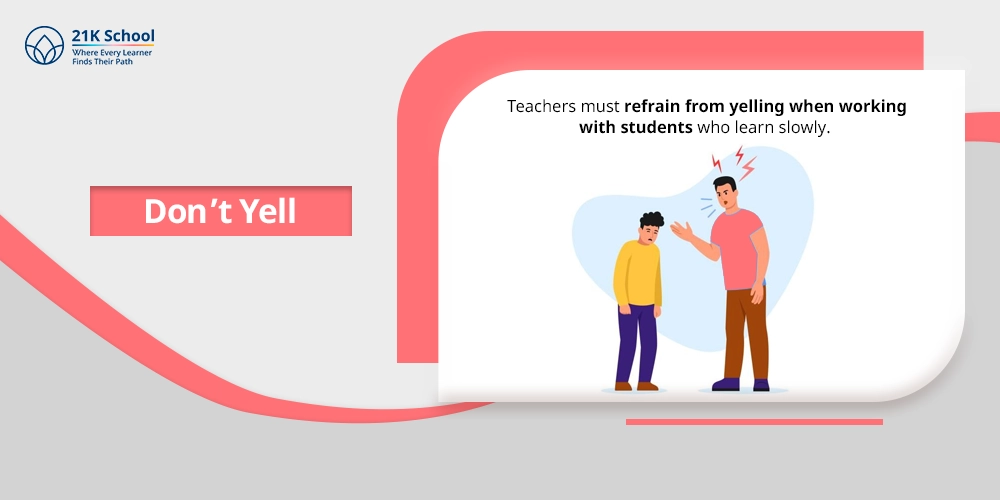
One of the worst ways to deal with slow learners is yelling at kids . Teachers must refrain from yelling when working with students who learn slowly.
Students who are yelled at will experience depression, a decline in self-worth, a lack of fairness and a halt in the students mental health . Students’ positive well-being depends on a safe and positive learning environment.
5. Support and Praise Them
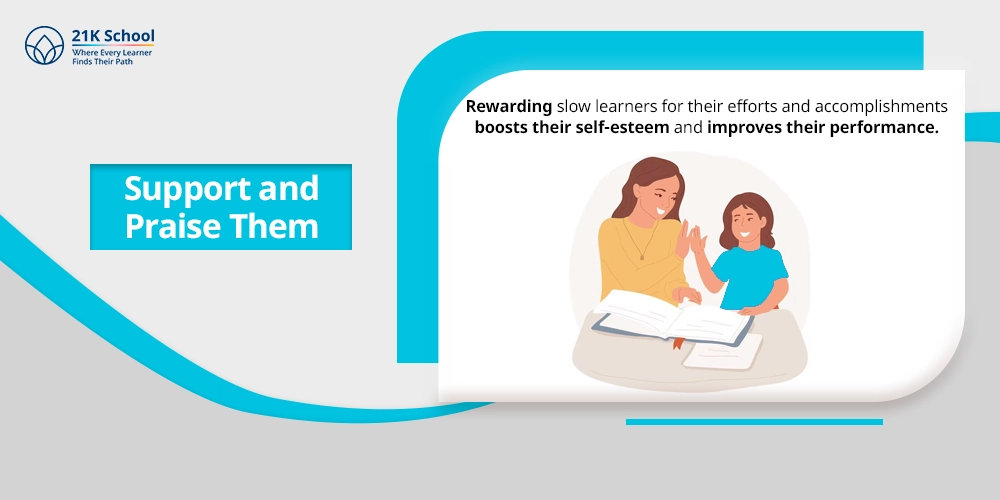
In order to effectively prepare children, it is crucial to support those who move slowly.
Rewarding slow learners for their efforts and accomplishments boosts their self-esteem and improves their performance going forward.
Support and recognition are essential for the normal development of children who struggle with learning.
Final Thought
To identify slow learners’ specific traits and behaviors that indicate memory and social interaction problems must be found.
These pupils may develop more slowly, struggle with reading and writing and have issues with clear thinking and communication.
Slow learners can greatly improve their learning outcomes if teachers and parents are patient, create an inclusive classroom , include them in collaborative projects even in online group projects and offer encouragement.
With the correct approach, these students can advance their abilities, gain confidence and realise their full potential.

